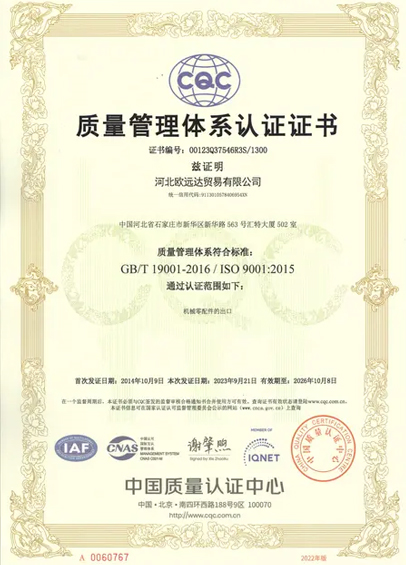Mobile:+86-311-808-126-83
Email:info@ydcastings.com
brass mold casting
The Art and Science of Brass Mold Casting
Brass mold casting is a fascinating intersection of art and engineering that has been utilized for centuries to produce a wide variety of brass components. This method not only showcases the beauty and versatility of brass as a material but also highlights the ingenuity of the casting process itself. As industries continue to evolve, so does the significance and application of brass mold casting in modern manufacturing.
Brass, an alloy composed primarily of copper and zinc, is renowned for its excellent corrosion resistance, electrical conductivity, and malleability. These properties make it an ideal choice for a range of applications, from musical instruments to plumbing fittings and decorative items. However, what truly sets brass apart is its ability to take on intricate shapes and finishes through various casting techniques, particularly mold casting.
Mold casting involves creating a series of molds into which molten brass is poured. The process begins with designing the part to be cast and then producing a mold that replicates this design with precision. There are several types of molds used in brass casting, but the two most common are sand molds and metal molds. Sand molds, made from a mixture of sand and a binding agent, are often used for their versatility and cost-effectiveness. They can accommodate large and complex designs, making them a popular choice for prototype and small-batch production.
On the other hand, metal molds, often crafted from steel or iron, offer greater durability and can be reused many times. This makes them particularly suited for high-volume production runs, where consistency and speed are essential. The choice between these two mold types typically hinges on the specific requirements of the project, such as production volume, cost constraints, and the desired surface finish.
brass mold casting

The casting process itself is meticulously controlled to ensure the integrity and quality of the final product. The brass is heated until it reaches a molten state, typically around 900 to 1100 degrees Celsius. Once fully liquefied, the molten brass is poured into the prepared molds, where it cools and solidifies. After cooling, the molds are removed, and the casting is cleaned and finished, which may include processes like sanding, polishing, or plating to enhance its aesthetic appeal.
One of the key advantages of brass mold casting is its ability to produce parts with excellent dimensional accuracy and surface finish. This is particularly beneficial in industries where precision is critical, such as aerospace and automotive manufacturing. Additionally, the casting process allows for the incorporation of complex features, like embedded threads or cooling channels, which can streamline assembly and improve functionality.
Sustainability is also becoming increasingly important in the world of manufacturing, and brass mold casting is no exception. Brass is a recyclable material, and the casting process can be optimized to minimize waste and energy consumption. Modern foundries often implement eco-friendly practices, including recycling scrap brass and utilizing advanced technologies to reduce emissions.
The future of brass mold casting will likely be shaped by advancements in technology and materials science. Innovations such as 3D printing of molds and the use of nanomaterials in alloys are already beginning to influence the casting landscape. These technologies offer unprecedented design flexibility and can lead to lighter, stronger, and more efficient components.
In conclusion, brass mold casting is a time-honored technique that combines tradition and modern engineering. Whether for decorative art or functional components, the appeal of brass and the precision of mold casting continue to make this process relevant in today's manufacturing world. As we look ahead, the evolution of brass casting will undoubtedly create new opportunities and challenges, ensuring its place at the forefront of industrial innovation for years to come.
-
Understanding Metal Casting TechniquesNewsApr.02,2025
-
Understanding Exhaust Manifolds for Enhanced Engine PerformanceNewsApr.02,2025
-
The World of Metal FabricationNewsApr.02,2025
-
Key Components for Pump and Turbo EfficiencyNewsApr.02,2025
-
Essential Tools for Automotive Maintenance and RepairNewsApr.02,2025
-
Durable Valve Components for Effective Water ManagementNewsApr.02,2025











